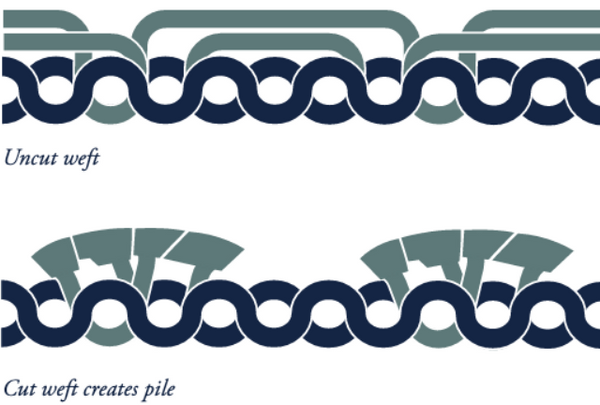Face it. You probably wore corduroy as a kid, although you probably didn’t know why—your parents dressed you in it whenever it was chilly out or you needed clothes that could take a beating. Maybe, just maybe, you wore it with some intention during a rebellious phase, incorporating it into some hardcore or rugged look. But now that you’re very much an adult, what’s your present relationship with corduroy? Chances are you’re hard-pressed for an answer, so hold off on doing that just yet.
Corduroy has strong, and often contradictory, associations–it belongs to the working class but also to the gentry, it belongs to professors but also to rock stars. Corduroy comes in and out of fashion, but it’s never kept down for long. Over the last several years, what was an otherwise-neglected cloth is experiencing something of a renaissance within the realm of tailoring, so why not consider it for your next custom suit, jacket, or pair of pants?
Before we start, let’s dispel an all-too persistent myth: its name does not derive from the French “corde/cour du roi” (“cloth/court of the king”), despite the industry claims. While its exact etymology is still uncertain, it is more likely to be a portmanteau of the English words “cord” and “duroy” (a historical woolen cloth); regardless, it is a cut cloth much like its more regal cousin, velvet.
Although corduroy can be woven from any fiber, it is synonymous with cotton (either pure or blended with cashmere, polyester, elastane, etc), woven with one warp and two fillings, one of which is called the pile yarn. Once woven, a coat of glue applied to its reverse secures the cloth for the next step, a cutting process that creates its signature ridges, or “wales”. The glue is then removed, the cloth is dyed, and the wales are finished to a fuzzy nap. Corduroy can have as few as 1.5 (“elephant corduroy”) or as many as 22 (“pincord”) wales per inch, but for most wearers, a 10 to 12-wale cloth is best for a jacket or a suit, with trousers better able to tolerate a wider wale cloth.

Image credit: Holland & Sherry
While corduroy as we know it originated in eighteenth century England, its roots are in medieval Egypt, where the inhabitants of Fustat (part of modern-day Cairo) wove linen warp and thick cotton weft into a cloth that they then shaved on one side, giving it a thick, luxurious pile. European merchants eagerly bought up the cloth, which they called “fustian” after the city, and brought it to Europe, where it was employed everywhere from bedding to dresses, clerical vestments, and court dress for servants to the French king.
Fustian evolved into corduroy when the English adapted the cloth to their cooler (and wetter) climate, creating a softer and more durable cloth that dries quickly and retains warmth in the cold. This new cloth eventually took the name corduroy. Corduroy was ideal for aristocratic pastoral pursuits, and in that regard it has survived as a staple of the traditional English country style. Paradoxically, the Industrial Revolution also made it the preferred cloth of the working class as it could withstand the stresses and requirements of regular labor. As the twentieth century arrived, Ivy Leaguers, Parisian intellectuals, and Alpine hikers all wore it, but by the 1960s, the cloth had lost favor. That changed entirely when The Beatles began wearing corduroy suits, causing an upsurge in popularity for the cloth that lasted through the 1970s. Although it was popular among grunge rockers of the 1990s, corduroy is currently the most popular it’s been in more than a generation. Don’t forget it has also been a preferred fabric of Pablo Picasso, Mick Jagger, Steve McQueen, Jarvis Cocker, Eddie Vedder (who actually wrote the hit single Corduroy) and Wes Anderson!
We know it’s warm and durable, but why should you choose corduroy for your next tailored garment? Simply put, it bridges casual and tailored dressing (ever useful in this day and age), and it’s worn easily as either a suit or separates. The three-dimensionality of its wales makes it easy to pair with other textured fabrics such as silk, suede, and knits, and if you play with different wale-widths, corduroy can even look great paired with itself!

Image credit: Scabal
For the absolute beginner, start with a pair of pants in a dark, more muted brown and green–it’s less conspicuous and it looks good on everyone. As you familiarize yourself with the fabric, start integrating earth tones such as olive, tan, and khaki, and then either go darker into black and navy or brighter into red, mustard, burgundy, and light green. Why not create a corduroy suit, casual jacket, or even an alternative dinner jacket? The possibilities are endless!
What else should you know before designing a custom corduroy outfit? First, as the fabric is so three-dimensional, it’s best to keep the design of any garment rather minimal, allowing the fabric itself to remain the focus. Second, avoid making any garment’s silhouette too close-cropped because if it’s too tight, there’s no room for the fabric to relax, causing wrinkles to appear at the sleeves, upper back, and front buttonholes. Lastly, avoid pressing the garment directly with an iron, because the weight and heat of the iron permanently crush the fabric. Corduroy performs better than most cottons in that it will shred most wrinkles on the hanger, and what doesn’t come out from hanging will disappear with a light steaming.
So now that you’ve got Corduroy 101 firmly under your belt, go ahead and ask yourself, “What’s my relationship with corduroy?”!
Learn more about our custom process here.
